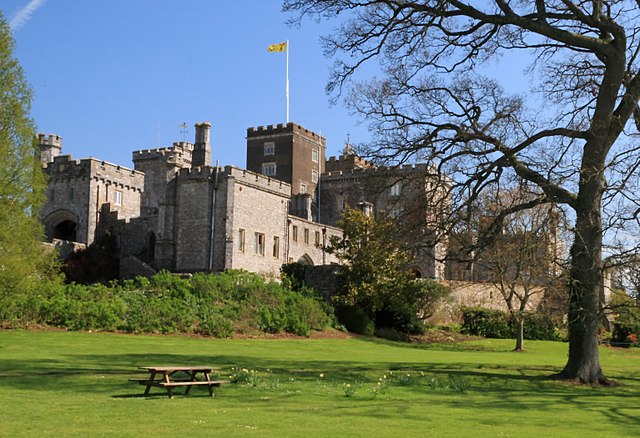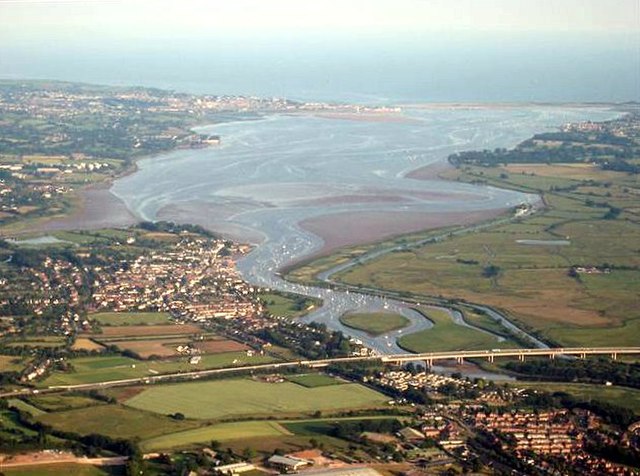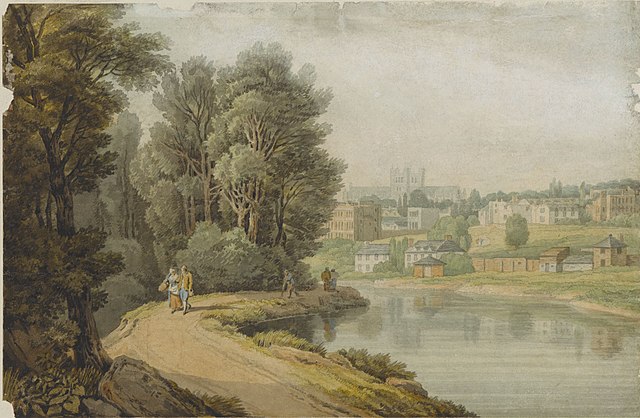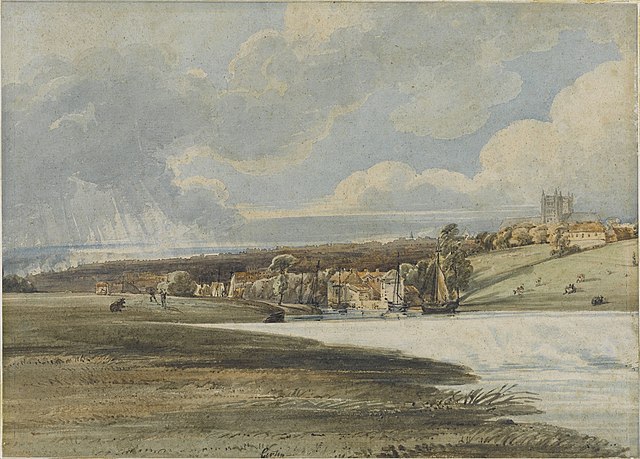Powderham Castle is a fortified manor house situated within the parish and former manor of Powderham, within the former hundred of Exminster, Devon, about 6 miles (9.7 km) south of the city of Exeter and 1⁄4 mile (0.4 km) north-east of the village of Kenton, where the main public entrance gates are located. It is a Grade I listed building. The park and gardens are Grade II* listed in the National Register of Historic Parks and Gardens.
Powderham Castle seen from the south west, flying the heraldic flag of the Earl of Devon
Powderham Castle: 19th-century gatehouse viewed from the west
Powderham Castle, view of the Victorian entrance tower (left) and causeway from the south-west
Powderham Castle, west front, viewed from under the Victorian gatehouse. The leftmost tower dates from 1390 to 1450 as does the main high central block, which originally housed a full-height great hall. The central entrance tower was built 1710–1727. The single-storey projecting room built between the two towers, with three tall gothic-style windows, is the Victorian Dining Hall.
The River Exe in England rises at Exe Head, near the village of Simonsbath, on Exmoor in Somerset, 5.2 miles (8.4 km) from the Bristol Channel coast, but flows more or less directly due south, so that most of its length lies in Devon. It flows for 60 miles (96 km) and reaches the sea at a substantial ria, the Exe Estuary, on the south coast of Devon. Historically, its lowest bridging point was the Old Exe Bridge in Exeter, the largest settlement on the river, but there is now a viaduct for the M5 motorway about 2 miles (3.2 km) south of the city centre.
The Exe Estuary from a balloon over Exeter. The M5 motorway is in the foreground, Topsham on the left bank just beyond, and Exmouth at the river mouth opposite Dawlish Warren.
'Exeter as seen from the River'. Watercolour on paper by John White Abbott
The Exe Estuary with Powderham Castle in the background.
'Exeter from Trew’s Weir' circa 1799. Watercolour on paper by Thomas Girtin








